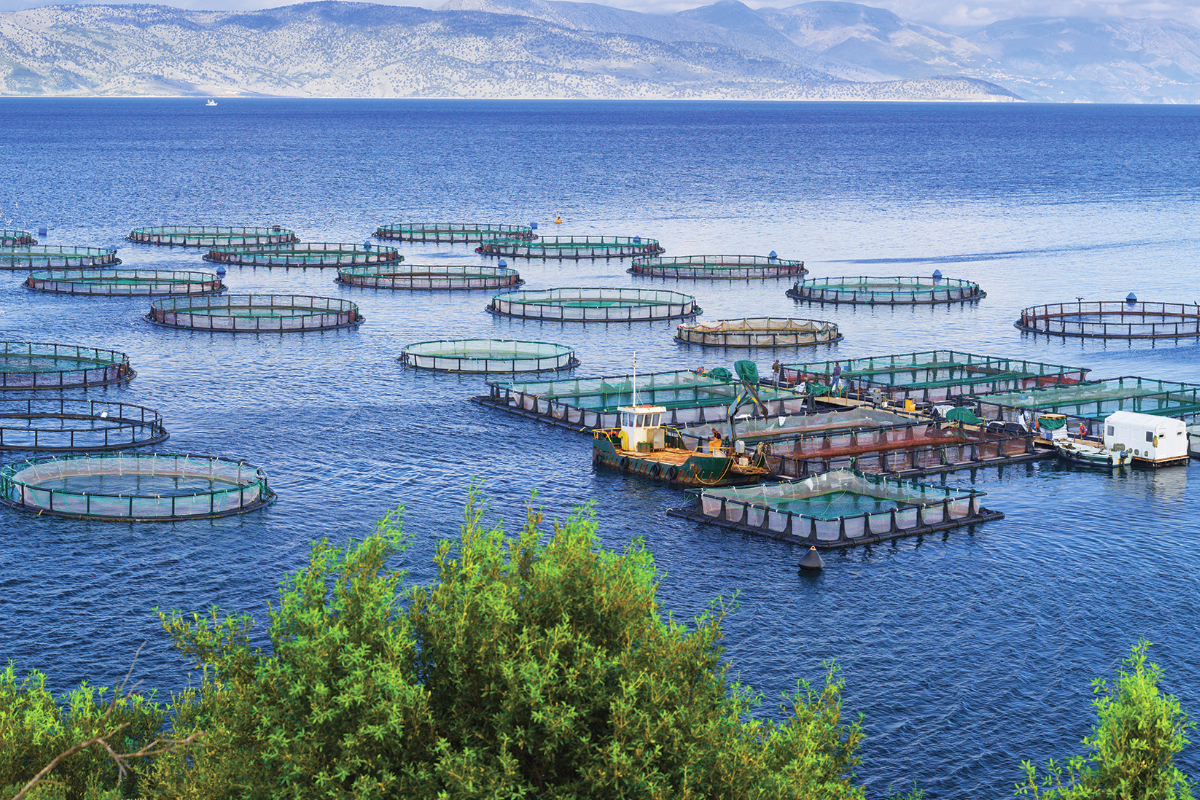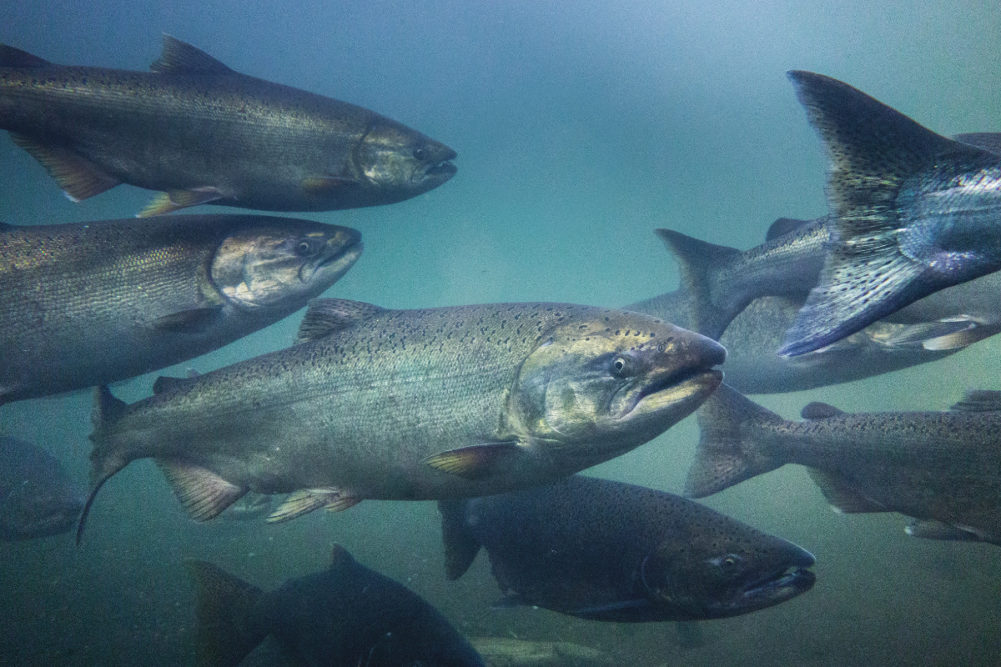The South Africa aquaculture sector’s contribution to the economy is considered minor, but the overall growth of fish farming in the country has been described by its Department of Agriculture as “fast-developing,” raising the expectations of increased demand for aquafeed and associated ingredients, particularly corn, fishmeal, soybeans, fish oil and even wheat.
A growing global awareness of the benefits of consuming seafood has seen South Africa channeling a large share of its estimated 612,200 tonnes of capture fish to international markets, thus creating gaps in domestic supply chains. A revamped aquaculture sector is expected to fill and ultimately push up the country’s per capita fish consumption from the current 6.1 kilograms, which is far below Africa’s average of 8.9 kilograms and the global figure of 20.3 kilograms.
South Africa has identified the aquaculture sector’s potential to support economic growth and had previously identified at least 24 different projects to be implemented under the country’s development blueprint of “Operation Phakisa: Ocean economy,” with a target of increasing output an estimated 5,500 tonnes – of which 3,660 tonnes are marine aquaculture in 2017 – to 20,000 tonnes by 2030.
The envisaged projects, a few of which are underway, are located mainly in aquaculture production areas of Limpop, Mpumalanga, Lowveld and northern Kwazulu Natal.
Earlier, South Africa had set a short-term target of increasing the sector’s revenue to $78 million from $27 million by the end of 2019. But because of the sluggish performance of the economy that slowed from 1.3% in 2017 to 0.7% in 2018, this may not have been achieved. Statistics on the 2019 aquaculture production levels and revenue earnings are yet to be released.
Currently, South Africa’s aquaculture sector, which contributes less than 1% to the country’s gross domestic product, produces aquatic plants, shellfish and fresh fish products despite persisting constraints in supply of freshwater that hampers the freshwater fish farming.
For the marine aquaculture segment, production is focused on abalone, black mussel, oyster, prawn, finfish and seaweed. The seaweed production contributes nearly one-third of South Africa’s total aquaculture production.
In fact, the country’s share in the global farmed abalone market is more than 20%, according to the Food and Agriculture Organization (FAO), which adds: “With the introduction of finfish culture, marine aquaculture production is expected to increase substantially.”
Freshwater aquaculture in South Africa is limited to the production of trout or salmon in the Western Cape and highlands areas, with small scale production of catfish, freshwater crayfish, tilapia and clarias gariepinus with a total output of less than 1,500 tonnes.
Drought impacts key raw materials
South Africa is not known to import compound animal feed but is a major African producer of corn and soybeans, the two main raw materials in the manufacture of aquafeed to meet the demand of the country’s nascent aquaculture sector. For example, during 2018-19, an estimated 10.4 million to 10.7 million tonnes of corn and about 1.6 million tonnes of soybeans were harvested.
However, production of these two key aquafeed raw materials frequently has been affected by droughts that the Animal Feed Manufacturers of South Africa (AFMA), a private organization representing animal feed producers in the country, said impacts production of the grains, sometimes leading to a “decline in the country’s production with a massive negative impact on the crop and for end users and processors.”
The Department of Agriculture said “raw materials for animal feed to some extent are adequately available in South Africa, particularly maize, the major ingredient in many of the manufacture of animal feeds.”
According to the AFMA, “the inclusion rate for maize was 52.05% of total feed sales on average.”
Elsewhere, the association estimates the inclusion rates for soybean meal, sunflower seed and oilcake at 13.43% and 4.57%, respectively.
In addition, the highly priced and high-quality protein animal feed ingredient of fishmeal is produced in South Africa and largely used in the formulation of compound feed, although the country remains a net exporter of the product, according to the Department of Agriculture.
A 2018 report by the Department titled, “South African Animal Feeds Market Analysis,” said currently there is a limited amount of fishmeal used in the compound feed formulation. The inclusion rate of fishmeal in feed production is estimated at 0.39%.
“Future expansion possibilities of fishmeal production are limited (in South Africa),” the report said. “The high international demand for fishmeal over the years led to a tendency to export rather than supplying the local market.”
An estimated 55,000 tonnes of fishmeal was exported from South Africa in 2016-17 despite campaigns by environmentalists such as Greenpeace against what it calls “wasteful fishmeal and fish oil industry, which is taking fish from people’s plates to feed fish farms, pigs or poultry in faraway markets.”
Competing for feed ingredients

Elsewhere, aquaculture’s demand for quality feed produced from processing of soybeans, corn and fishmeal, is in competition with the increasing requirements of the same ingredients for the production of beef, poultry and pork, both for South Africa’s export market and also for local consumption.
The increase in demand for meat, eggs and milk in South Africa, driven largely by the increasing population now at 57 million, along with the government’s push for an expansion of aquaculture sector could lead to an increase in aquafeed prices. This is in response to a spike in cost of the ingredients used in the formulation of animal feed.
For example, the Aquaculture Association of Southern Africa (AASA) said production of trout, which is mainly centered in the high mountain Lydenburg area, Western Cape and Kwazulu Natal, has been on the decline largely because of “economies of scale and higher feed costs.”
Aquaculture farms operating a recirculating aquaculture system (RAS) spend between 40% and 60% of their entire operational costs on feeds.
Furthermore, specialized aquafeed producing companies buying the raw materials, such as corn and soybeans, could be few since the South African market is still considered small compared to others like Egypt.
For example, Marifeed, a specialized aquafeed producer, said the company currently “formulates feeds for every life stage of abalone” in South Africa. The company manufactures the ABFEED brand of aquafeed in pellet form.
RCL Foods’ affiliate, Epol, also supplies the South Africa aquafeed market with its farmix trout (concentrate) and trout pellets formulations.
Furthermore, companies such as Yara Animal Nutrition South Africa, an affiliate of Yara International, produces Kynofos 18 Grandé, which the company describes as a “versatile P-supplement for all types of feeds and is recommended for use in concentrate, compound feeds, mineral feeds and free-choice supplements for ruminants, monogastric animals and aquatic species.”
Elsewhere, Specialized Aquatic Feeds company currently produces aquafeed to meet specific nutritional, immunity and growth needs of abalone, catfish, cob, tilapia, trout and yellowtail.
Notably, there are more than 74 other companies, all affiliated to the AFMA as associate members, that supply aquafeed production equipment, premix feed additives and key feed ingredients to support fish farming in South Africa.
In addition, there are other animal feed manufacturers, some that are members of the AFMA, producing aquafeed alongside many more brands of animal feed to meet the increasing demand from domestic and wild animals while at a smaller level there are feedlots, smaller feed mills and home mixers to supplement mainstream feed producers.
The outlook of South Africa’s aquafeed market will depend on how the government needs to address the constraints hampering expansion of the aquaculture sector such as the high cost of production, lack of access to funding, especially for small and medium investors, inadequate skilled manpower to support modern aquaculture production systems, and poor access to both the domestic and regional markets.
The aquafeed market also faces the challenge of access to feedstock such as corn and soybeans, particularly during the prolonged dry season that South Africa experiences frequently, and its high cost because of the volatility of global oil prices and competing demand for same products for human consumption.
It is envisaged that under the “Operation Phakisa: Ocean economy” initiative, South Africa would address the challenges holding back growth of the aquaculture sector and therefore constraining increased uptake of quality aquafeed. The ambitious government initiative would in the long term unlock the economic potential of South Africa’s oceans and generate up to $9 billion annually for the economy.
Specifically, the 24 planned marine aquaculture sector projects “offer significant potential for rural development, especially for marginalized coastal communities,” according to the Department of Agriculture.
But for the envisaged exponential growth of aquafeed manufacturing to develop in South Africa, the country’s Agricultural Sector Education and Training Authority (AGRISETA) said the government must give priority to the development of the aquaculture sector, which it said “has enormous potential to develop and expand – not only large commercial enterprises, but also with regards to small-scale and co-operative farmers.”
Shem Oirere is a Nairobi, Kenya-based freelance journalist who specializes in covering the African grain markets. He may be reached at [email protected].






